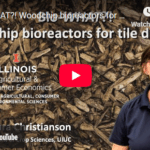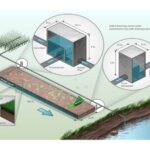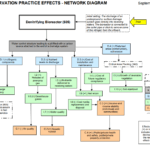Conservation Drainage
Throughout Illinois and other parts of the Midwest, farmers are increasingly investing in tile drainage systems to improve productivity and trafficability of their fields. Conservation drainage practices such as bioreactors, controlled drainage systems, saturated buffers, and constructed wetlands, are designed to capture and treat drainage from tile outlets, providing effective and often long-term nutrient loss reduction benefits.

SWCS Controlled Drainage Video
This video, in the SWCS Conservation Media Library, shows how conservation drainage provides more control and additional benefits to your fields.
Watch Video
University of Illinois Woodchip Bioreactor
Simple woodchip-filled trenches called bioreactors can clean nitrogen pollution from water. Find out more from Dr. Laura Christianson of the University of Illinois as she talks about one of her favorite ideas.
Watch Video
ADMC Bioreactor
This ADMC webpage provides information on bioreactors including considerations for installation and financial impacts.
View Website
NRCS Bioreactor Conservation Practice Standard Factsheet
This one page factsheet from NRCS provides an overview of woodchip bioreactors, how they fuction, and the benefits they provide.
View Website
Woodchip Bioreactors: A Science-based Option to Reduce Nitrate Loss
This fact sheet answers some of the most common questions about woodchip bioreactors using a recent survey of all published bioreactor research.
View WebsiteSmart Wetlands
Smart Wetlands, an initiative of The Wetlands Initiative, specifically sites, designs, and constructs tile-treatment wetlands to improve water quality in Illinois. Their website includes several resources for better understanding the impact of constructed wetlands on nutrient reduction.
View Website